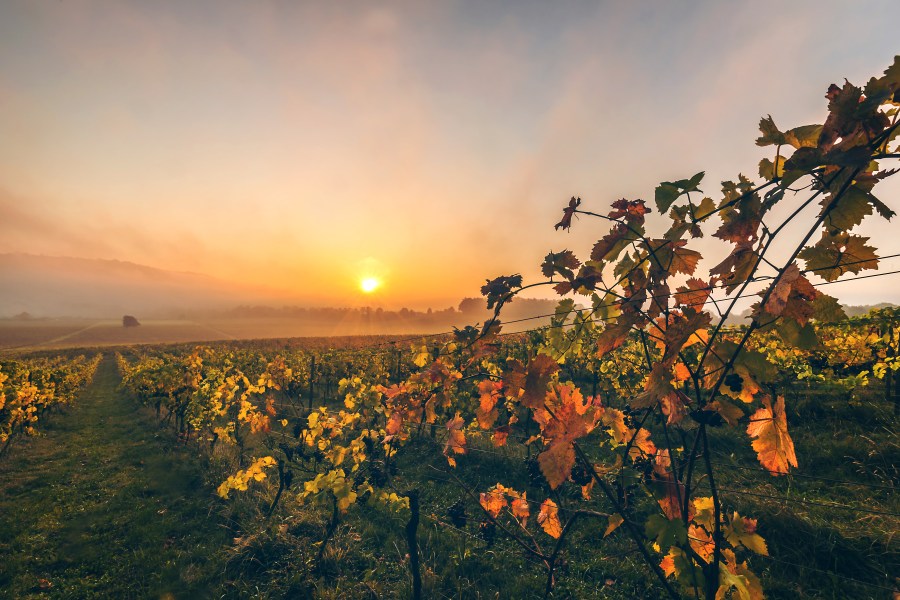Recently, more buyers have been looking for established vineyards, whereas previously the majority of inquires that came across my desk were from people seeking bare land.
This shift reflects the fact that buyers are likely to be established businesses keen to expand, that don’t want to wait for vines to reach full production. They want productive vineyards they can simply absorb, helping them achieve further economies of scale.
This consolidation is likely to happen ever-more, with the smaller vineyards in the right places on the right soils particularly likely to attract the attention of their larger counterparts.
Where the vines have been well-managed – and they’re established but less than 10 years old – land can easily make £35,000/acre and often £50,000/acre or even more. Meanwhile, bare land suitable for viticulture is making top side of £14,000/acre – and this figure could easily rise above £20,000 or even £25,000 in some instances. When the vineyard comes with buildings, a house or other infrastructure, it could well command even higher prices. With lots of deals done off-market, many such transactions never make the headlines.
Having been involved with this market for many years, one factor that has become apparent is that it’s impossible to separate prices and demand from the factors affecting the wider land market. Anything that influences agricultural land prices will be relevant to viticulture. And right now, I don’t see any reduction in the value of land. In fact, far from it. Land is going up in value, despite interest rate levels. The simple fact is there are more buyers than sellers.
Back in the 1990s, there were broadly two types of buyer for farmland – farmers and institutional investors. Nowadays, there are many, including farmers looking to expand their agricultural businesses (often funded by ‘rollover’ money from a development land sale); people with rewilding ambitions; corporates looking to fulfil their ESG and CSR responsibilities; plus those buying for biodiversity net gain purposes. On top of this, in an area such as the south east, there is a huge demand from ‘amenity’ buyers. Land can potentially be put to so many other uses, it doesn’t matter whether it’s next to the M25 and under a flight path or in a beautifully remote and picturesque part of Surrey – there will be lots of people who want it.
Despite this brisk demand, it’s important sellers of vineyards and would-be viticulture land make sure what they’re selling is fit to sell. As when selling any business, you need to present it in the absolute best possible light. This means making it as ‘production-ready’ as possible, but also making sure there are no issues which could cause a buyer to worry or hesitate. This covers everything from making sure the title deeds are in correct order and being clear about any public rights of way that affect it to having the paperwork related to any stewardship agreement on the land and being able to answer questions about whether an Environmental Impact Assessment would be required if there’s grassland a buyer might wish to plough up.
This is where choosing the right solicitor is vital. I’d always advise going for one who specialises in agricultural work and, even then, some are better than others! Picking the right one can make the difference between getting a deal done in a timely fashion and not.
If you’re selling land, be honest with yourself about what a realistic price is, too. That means trying to see its advantages and disadvantages through a would-be buyer’s eyes. Yes, sellers are in a strong position currently, but it’s still important to value it realistically and come up with a strategic and creative plan for getting it in front of the right people at the right time.
This spring comes at a buoyant time for the wine sector. WineGB recently released figures showing favourable weather led to the 2023 harvest being the biggest ever, with a harvest equivalent of between 20m and 22m bottles. Its figures also suggest 3,400ha is in production in 2023, compared with 1,297ha in 2012.
If new plantings continue at their recent pace and yields continue to rise, Britain is set to have in excess of 7,600ha of total planting by 2032. We should remember this is still a tiny area compared to the main wine-producing countries, but there’s no sign of the demand for land and vineyards in England and Wales slowing in 2024.




